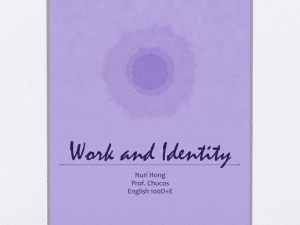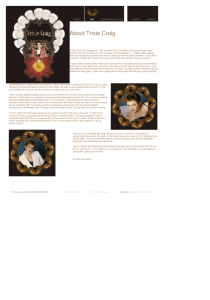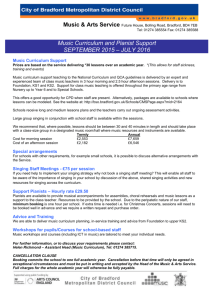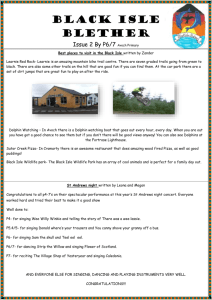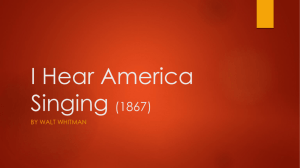Harlem Renaissance
advertisement
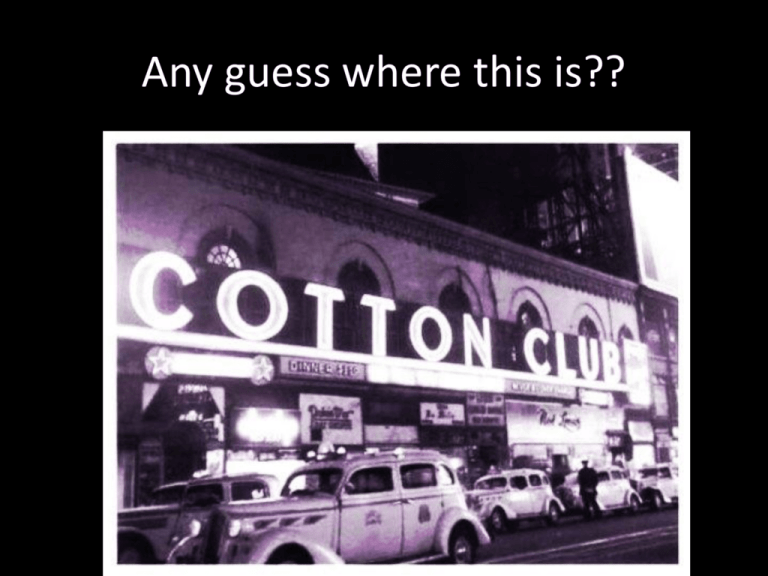
Any guess where this is?? Harlem Renaissance • http://www.history.com/videos/the-harlemrenaissance-an-artistic-explosion#the-harlemrenaissance-an-artistic-explosion • The Great Migration – Move from the rural South to industrial North • Harlem New York – Epicenter of African artistic expression • Claude Mckay – ‘defiance and bitterness towards racism’ • Langston Hughes- most famous today • Zora Neal Hurston- featured women Jazz • Louis Armstrong – Jazz Influenced by Dixieland music & ragtime with its ragged rhythms & syncopated melodies “Everything, and I repeat everything had to swing. And that was just it, those cats really had it; they had that soul. And you know you just can’t play some of this music without soul. Soul is very important.” Duke Ellington http://www.youtube.com/watch?v=kmfeKUNDDYs Blues & Theater • Bessie Smith – Blues • A soulful style of music that evolved from African American spirituals • Unfulfilled love, poverty, & oppression • “Down Hearted Blues” • Paul Robeson – Won acclaim for acting – Shuffle Along (1921) Harlem Renaissance succeeded in bringing international fame to African Americans & sparked political transformation in the U.S. Politics • Change in attitude after WWI • Changing political power – Great Migration – Oscar DePriest – First African American in Congress – NAACP (1909) National Association for the Advancement of Colored People 1922- anti lynching bill was defeated by the Senate -Lobbied public officials & used the court system Nationalism • • • • • • • Marcus Garvey “Negro Nationalism” Inspired by Booker T. Washington United Negro Improvement Association (UNIA) Advocated separation from whites Lead to Africa Racial purity & separation • Distanced himself • Catalyst • 1923-Prison time – Mail fraud • Deported to Jamaica I Hear America Singing I Hear America singing, the varied carols I hear; Those of mechanics--each one singing his, as it should be, blithe and strong; The carpenter singing his, as he measures his plank or beam, The mason singing his, as he makes ready for work, or leaves off work; The boatman singing what belongs to him in his boat--the deckhand singing on the steamboat deck; The shoemaker singing as he sits on his bench--the hatter singing as he stands; The wood-cutter's song--the ploughboy's, on his way in the morning, or at the noon intermission, or at sundown; The delicious singing of the mother--or of the young wife at work--or of the girl sewing or washing--Each singing what belongs to her, and to none else; The day what belongs to the day--At night, the party of young fellows, robust, friendly, Singing, with open mouths, their strong melodious songs. Walt Whitman Assignment • You may work with 1 other person • Read & analyze both poems • Questions to consider: 1. What are the connections between the two? 2. What is the theme of each poem? Are they the same? Why or why not? 3. What is the tone? Optimistic, tragic, pessimistic 4. What words give the poem meaning? • Answer these questions BEFORE you write your poem • Ultimately, you want to find some connection between the two. Keep in mind Hughes poem is a response to Whitman’s. • Next, write your own poem in response to Whitman’s poem. Next to your poem, a brief description of your poems message (theme) This part is to be done by YOURSELF. Each person MUST turn in their own poem. This is worth 10 Points (Be ready to share tomorrow)
